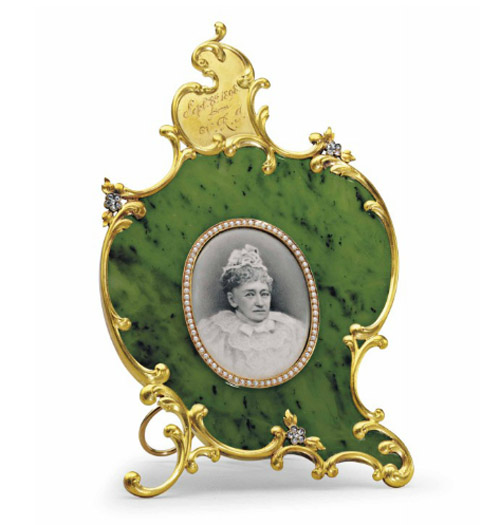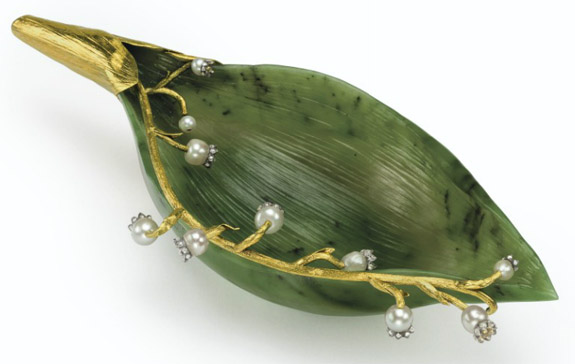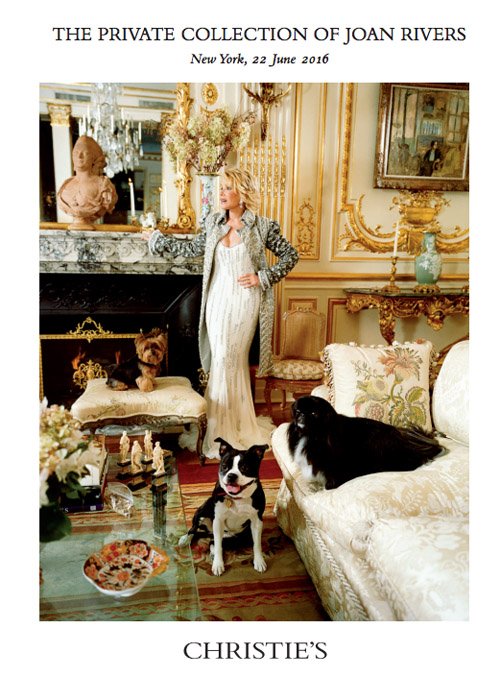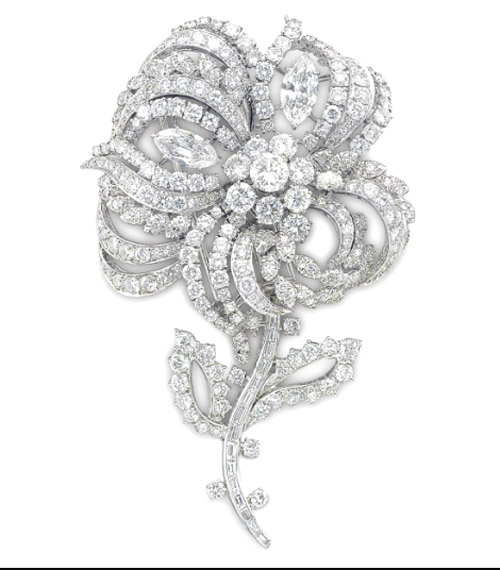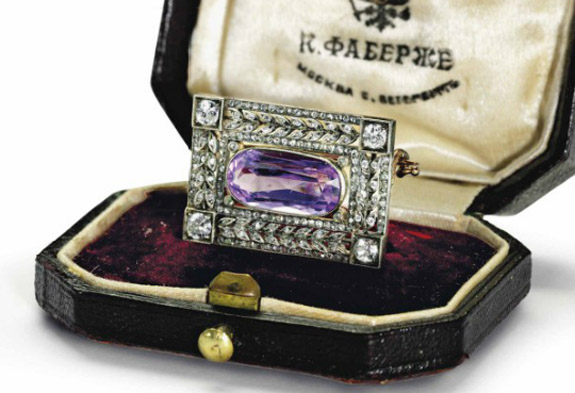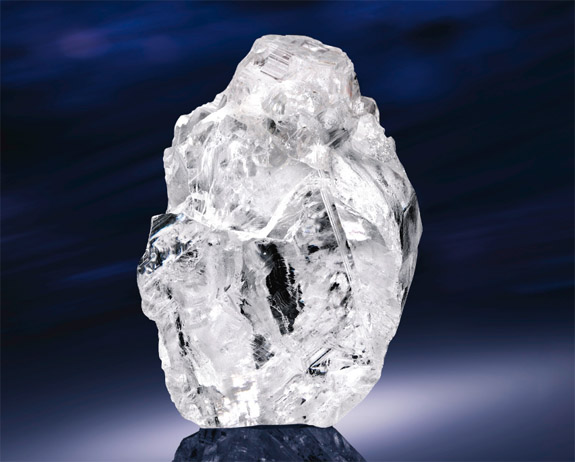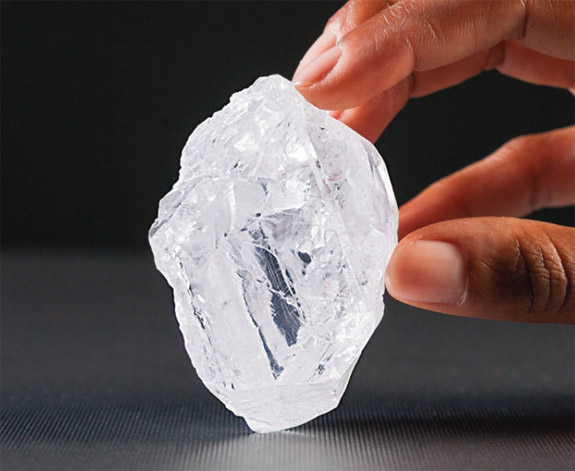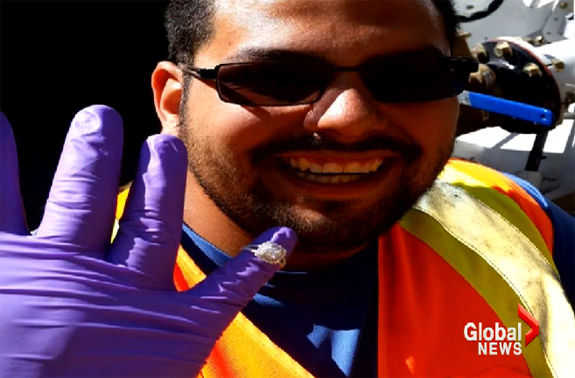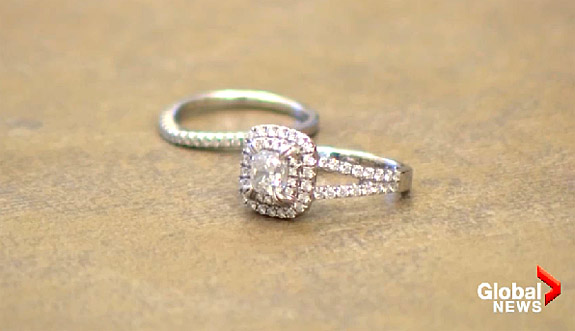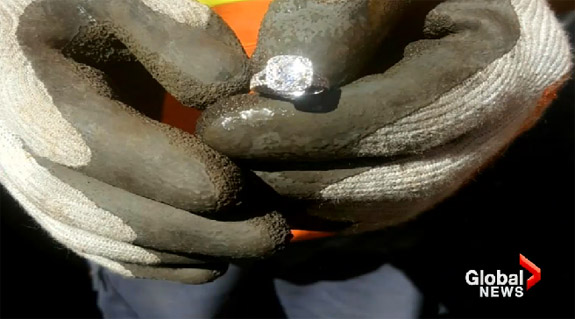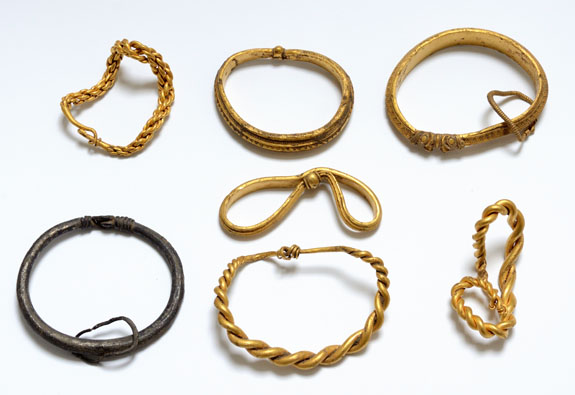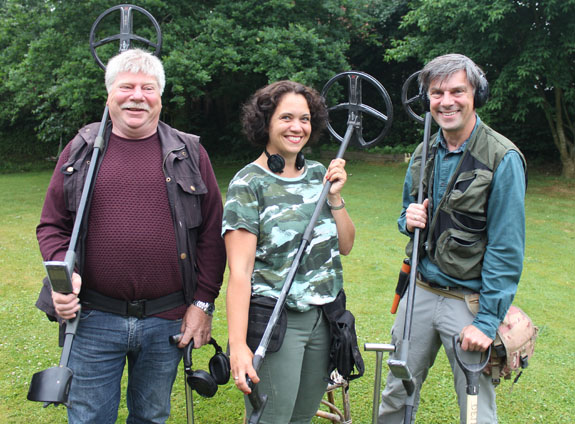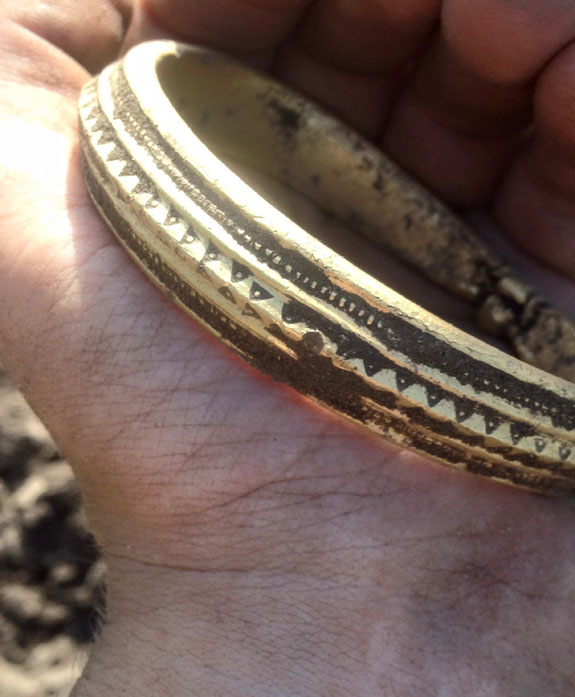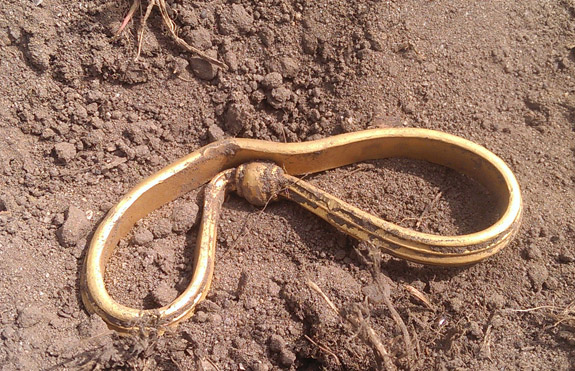Welcome to Music Friday when we bring you hot, new songs with jewelry, gemstones or precious metals in the title or lyrics. In today's installment, Meghan Trainor shows off her gold-and-diamond "MTRAIN" necklace in the viral video for her new hit single, "Me Too."

In this song about self-love, body image and empowerment, Trainor sings, "What's that icy thing hangin' 'round my neck? / That's gold, show me some respect."

The official video, which has been viewed a staggering 98 million times, includes an extreme closeup of Trainor's necklace, with MTRAIN spelled out in raised gold letters on a framed plaque adorned with two bezel-set diamonds.
Trainor, the 2016 Grammy Award winner for Best New Artist, co-wrote "Me Too" with Jason Derulo and three other collaborators. It was released on May 5 as the second single from her album, Thank You, and quickly ascended the U.S. Billboard Hot 100 chart. It currently resides at #18 after coming in at #31 last week.
Interestingly, the official video for the song was released on May 9 and quickly pulled by Trainor the same day after the artist learned that her image was digitally manipulated, apparently to make her waist look thinner.
On Snapchat, Trainor commented, "My waist is not that teeny. I didn't approve that video and it went out for the world, so I'm embarrassed."
Trainer famously referenced Photoshop editing in her mega-hit "All About That Bass" when she sang, "I see the magazines working that Photoshop, we know that ain't real, come on now make it stop."
On May 10, a new edit of video was released.
The 22-year-old Trainor rose to fame after releasing Title in 2015. That chart-topping album produced three Top-10 singles and sold more than a million copies in the U.S. alone.
We know you'll enjoy Trainor's official video of "Me Too." The lyrics are below if you'd like to sing along.
"Me Too"
Written by Meghan Trainor, Eric Frederic, Jacob Kasher Hindlin, Jason Derulo and Peter Svensson. Performed by Meghan Trainor.
Who's that sexy thing I see over there?
That's me, standin' in the mirror
What's that icy thing hangin' 'round my neck?
That's gold, show me some respect
I thank God every day
That I woke up feelin' this way
And I can't help lovin' myself
And I don't need nobody else, nuh uh
If I was you, I'd wanna be me too
I'd wanna be me too
I'd wanna be me too
If I was you, I'd wanna be me too
I'd wanna be me too
I'd wanna be me too
I walk in like a dime piece
I go straight to V.I.P.
I never pay for my drinks
My entourage behind me
My life's a movie, Tom Cruise
So bless me, baby, achoo
And even if they tried to
They can't do it like I do
I thank God every day
That I woke up feelin' this way
And I can't help lovin' myself
And I don't need nobody else, nuh uh
If I was you, I'd wanna be me too
I'd wanna be me too
I'd wanna be me too
If I was you, I'd wanna be me too
I'd wanna be me too
I'd wanna be me too
(Turn the bass up)
Turn the bass up
(Turn the bass up)
Let's go!
I thank God every day
That I woke up feelin' this way
And I can't help lovin' myself
And I don't need nobody else, nuh uh
If I was you, I'd wanna be me too
I'd wanna be me too
I'd wanna be me too
If I was you, I'd wanna be me too
I'd wanna be me too
I'd wanna be me too
If I was you, I'd wanna be me too
I'd wanna be me too
I'd wanna be me too
If I was you, I'd wanna be me too
I'd wanna be me too
I'd wanna be me too
Credits: Image captures via YouTube.com.
